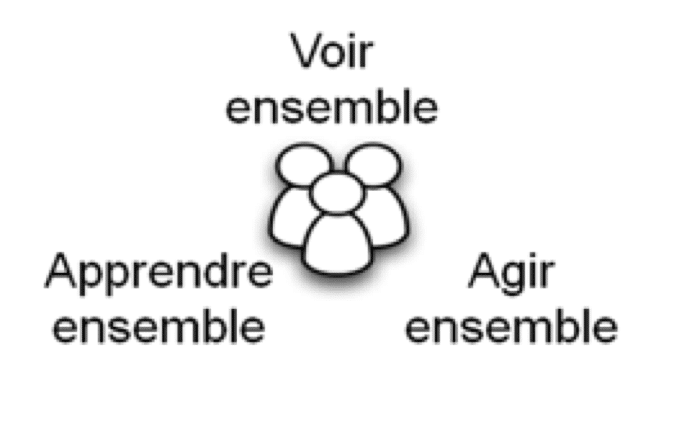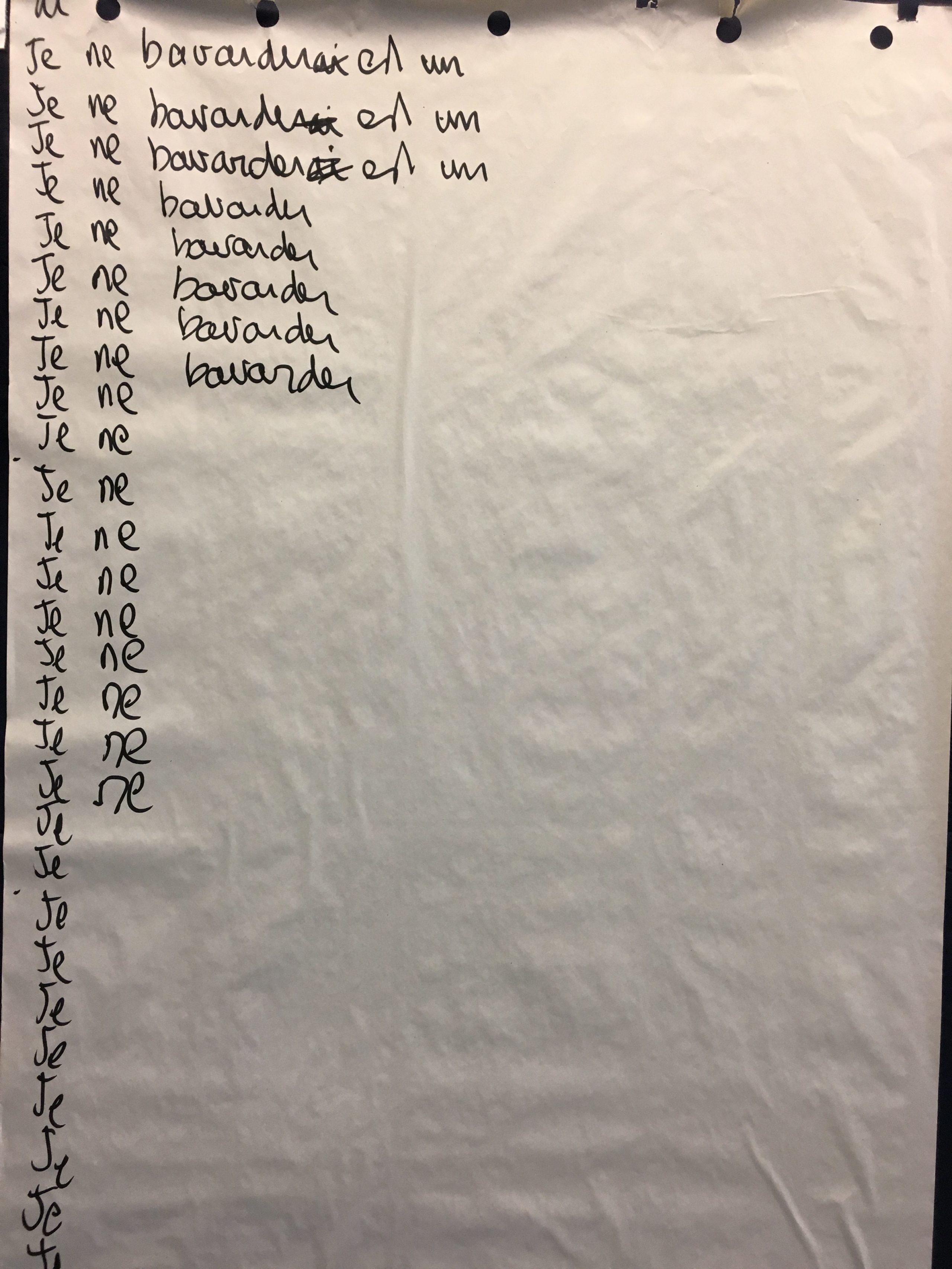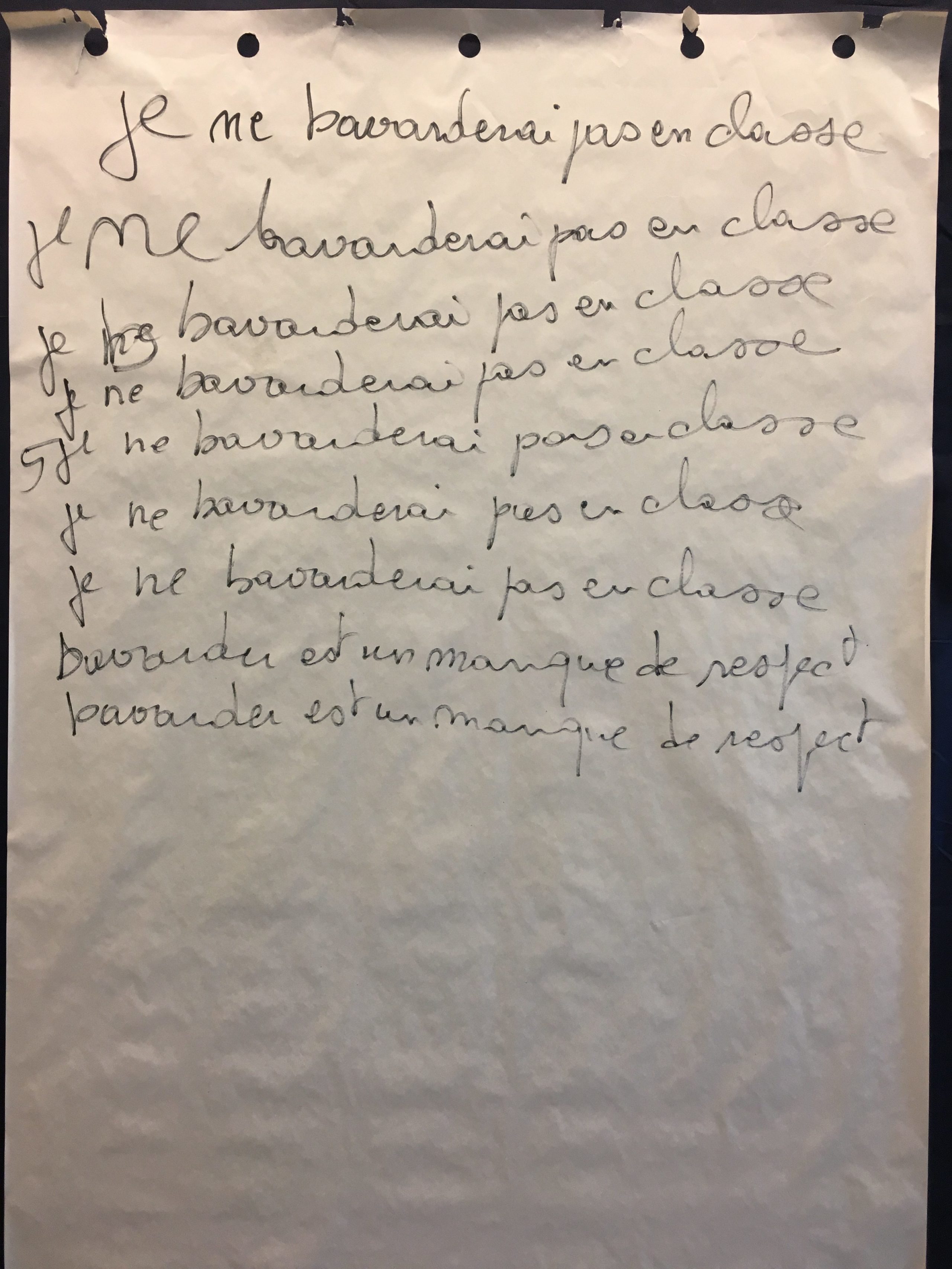
Photo by Nikhita S on UnsplashVous cherchez à introduire Kanban mais vous n’avez pas 2h devant vous pour jouer à un getKanban ou un Kanban Pizza Game ?
Agile Detention est fait pour vous : il ne dure qu’une petite quinzaine de minutes !
Je vous invite à découvrir ce petit atelier à utiliser sans modération ! 🙂
Bonne lecture ! 😉
Matériel
Ce qui est bien avec cet atelier, c’est qu’il faut très peu de matériel :
- Tableau blanc, Feuilles de paper board
- Feutres
Le principe étant simplement d’avoir 2 espaces d’écritures pour pouvoir vivre l’expérience en direct ! 😉
Introduction

Commençons par un peu de Story Telling :
Je vous invite à retourner en enfance, tout particulièrement du côté de l’école primaire. Vous en souvenez vous ?
Je laisse quelques secondes, le temps que les personnes puissent visualiser quelques éléments de cette période. Il y a quelques hochements de tête la plupart du temps.
Vous arrivait-il de faire des bêtises en classe ?
Des sourires se dessinent généralement sur les visages 😛
Vous rappelez vous des punitions qui étaient prodiguées la plupart du temps dans ces contextes ?
L’objet est d’attendre ici la punition consistant à écrire un certain nombre de fois une phrase imposée par une autorité (professeur, surveillant…).
Quelles techniques utilisiez-vous pour remplir cette tâche ? De quelles techniques vous souvenez-vous ?
Les réponses ici seront généralement :
- J’écris ligne par ligne – la phrase en entier et j’enchaîne
- J’écris colonne par colonne – le même mot répété verticalement
Laquelle vous semble la plus efficace ? La plus pertinente ?
Vérifions ! 😉
Note : Vous pouvez aussi parfois découvrir l’inventivité de jeunesse de vos participants :
- J’attache plusieurs stylos ensemble pour pouvoir écrire plusieurs phrases en même temps
- J’écris des deux mains en même temps
- …
Nous laisserons bien sûr ces options de côté pour nous attarder sur les 2 premières ! 🙂
Au coeur de l’atelier

Instructions
J’invite alors 2 personnes à se porter volontaires pour expérimenter :
- l’une écrivant chaque phrase en ligne : nous l’appellerons (A)
- l’autre chaque mot en colonne : nous l’appellerons (B)
La phrase que je donne est la suivante :
Je ne bavarderai pas en classe
Note : la phrase a peu d’importance, vous pouvez choisir celle que vous voulez ! 😉
Je donne ensuite le nombre de fois que devra être écrite cette phrase en choisissant un nombre suffisant pour que cela aille en bas de la feuille : 25 par exemple.
Je m’assure une dernière fois que les règles sont bien comprises et je lance l’activité.
Animation
Pendant que les participants écrivent, mon regard se porte naturellement sur (A) qui écrit la phrase en entier, ligne par ligne.
(B) de son côté travaille un peu ses flexions de genoux en écrivant son premier mot pour la 15ème fois ! 😛
| Prenons un peu de recul :
Ici le demandeur est associé au client qui émet une commande. Il observe alors ses 2 partenaires de réalisation à l’oeuvre. |
Après quelques phrases écrites par (A), entre 3 et 5 généralement, je me permets d’intervenir en disant :
Je pense que j’ai été un peu dûr avec vous, 25 c’est un peu beaucoup,
je pense que vous pouvez vous arrêter à 10 finalement !
À ce moment là, on peut observer quelques sourires dans l’assistance mais surtout un premier désarroi de (B) : il comprend qu’il ne finira pas ces 15 dernières lignes et donc qu’il a fourni un effort pour rien !
| Prenons un peu de recul :
Qu’est-ce qui a amené le client (moi donc dans cet exemple) à intervenir ? L’observation de (A) ayant sorti quelques phrases en quelques minutes lui permet de rendre visible sa capacité de production et d’aider le client à se projeter à la fin du projet. En effet, s’il a sorti 5 phrases en 1 mn alors il devrait aboutir au bout de 5 mn. C’est rassurant car le client voit des choses sortir. Se crée alors naturellement un sentiment de confiance. Que dire de (B) ? Difficile de savoir en réalité car tout est en cours. Le client reste alors dans un flou anxiogène. De plus, ayant commencé à travailler sur des éléments qui ne seront au final pas délivrés, (B) a créé du gâchis ! |
Après 1 ou 2 phrases supplémentaires de (A), je reviens à la charge en disant :
D’ailleurs, tout compte fait, je pense que je ne vous ai pas donné la bonne phrase.
Je préfèrerai que vous écriviez plutôt : Bavarder est un manque de respect.
Note : je choisis bien évidemment une nouvelle phrase qui ne rentre pas dans la structure de phrase précédente ! 😛
Second désarroi de (B) qui la plupart du temps s’arrête d’écrire, ne sachant plus quoi faire de ce qui a déjà été commencé.
(A) de son côté peut simplement terminer la phrase en cours pour ensuite enchaîner avec la nouvelle sans encombre.
J’arrête alors tranquillement l’atelier ici et nous commençons à échanger sur ce qu’il vient de se passer ! 🙂
| Prenons un peu de recul :
Pourquoi ce changement de demande ? Le client observe et étudie le résultat qui est produit. Il apprend ainsi de son besoin. Rappelons nous que : « le client ne sait ce qu’il veut que lorsqu’il le voit », ce qui explique les changements de besoin récurrents en cours de projet. Gestion du changement ? On touche ici au coeur du sujet :
Terminer chaque élément avant d’en commencer un autre c’est augmenter ses chances de faire la bonne chose au bon moment.
Tout commencer en même temps c’est augmenter ses chances de créer du gaspillage en avançant dans l’obscurité de l’effet tunnel. |
Résultats obtenus
|
|
|
Quels liens avec Kanban ?
Si l’on revient à l’origine de Kanban, on passe forcément par la case du Lean :
Satisfaire le client, dans le respect des employés, en limitant le gaspillage sous toutes ses formes.
L’atelier ne prenant en compte qu’une seule personne et non pas une équipe, on peut se baser sur les pratiques du Personal Kanban :
- Visualiser
Voir est fondamental en Kanban, d’ailleurs le terme est souvent traduit par « étiquette », ce qui correspond bien à un objet visuel.
Je ne pourrais que rappeler ici le fameux triptique du Management Visuel :

- Limiter
Beaucoup d’équipes disent faire du Kanban mais ne mettent en oeuvre que le tableau Kanban, correspondant à la première pratique Visualiser. Même si le gain de cette première pratique peut être énorme et parfois suffisant dans une équipe, je pense que le véritable levier d’action est dans la limitation du travail en cours : travailler sur moins de choses en même temps, c’est garder le contrôle sur son système de production.
Stop Starting, Start Finishing
Conclusion
Agile Detention est un atelier que j’affectionne tout particulièrement car il est court et permet des échanges riches et intéressants. Le débriefing est bien évidemment fondamental mais comme beaucoup d’ateliers Kanban, les apprentissages sont assez directs et ne nécessitent pas d’explications à tirer par les cheveux.
Restons simples, sans superflu 🙂
N’hésitez pas à me partager vos expériences de l’atelier car l’essayer, c’est l’adopter ! 😉









Une réponse
Bonjour Olivier,
Merci pour ce partage, toujours très intéressant et inspirant.
Bonne journée
Sylvia